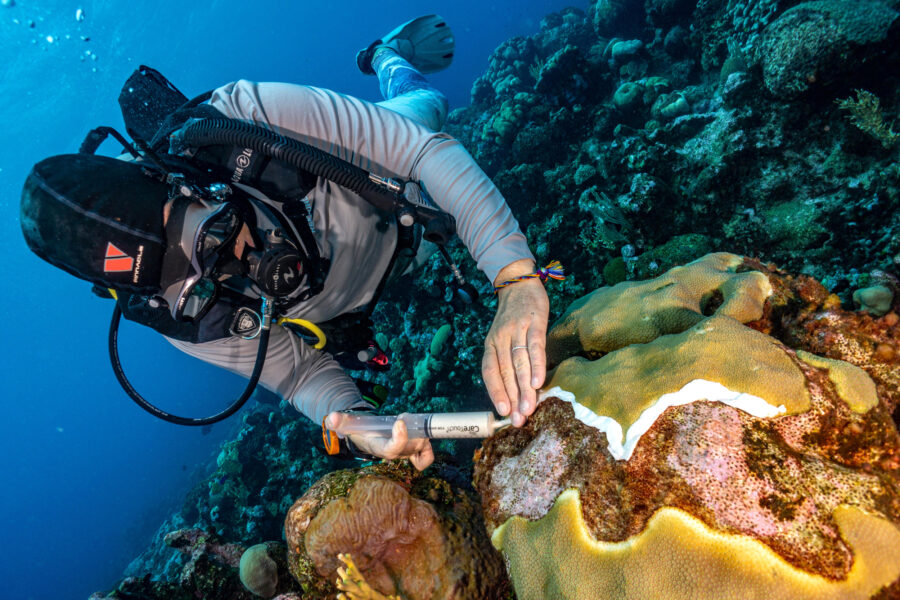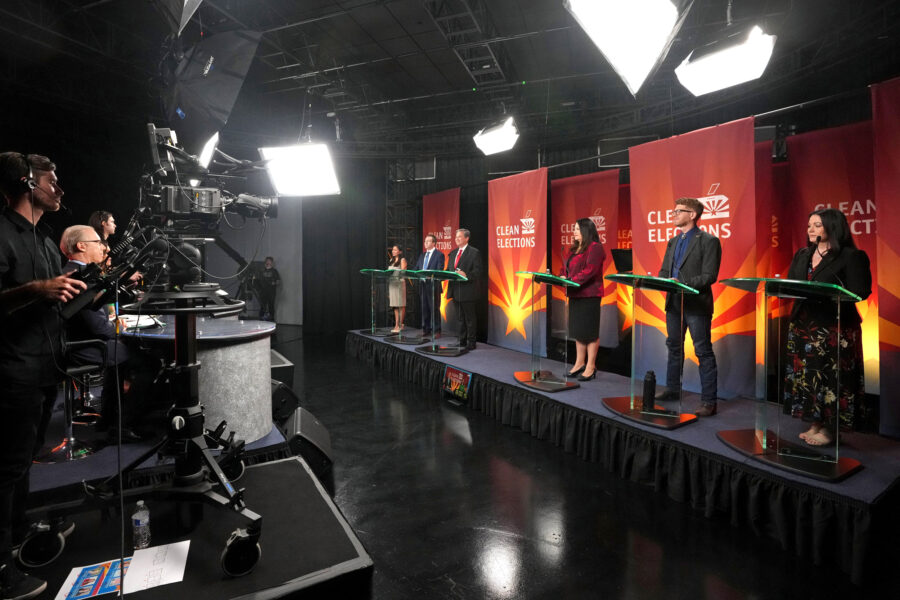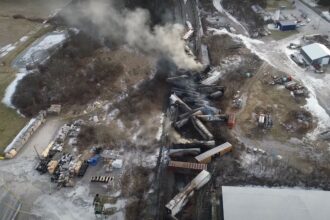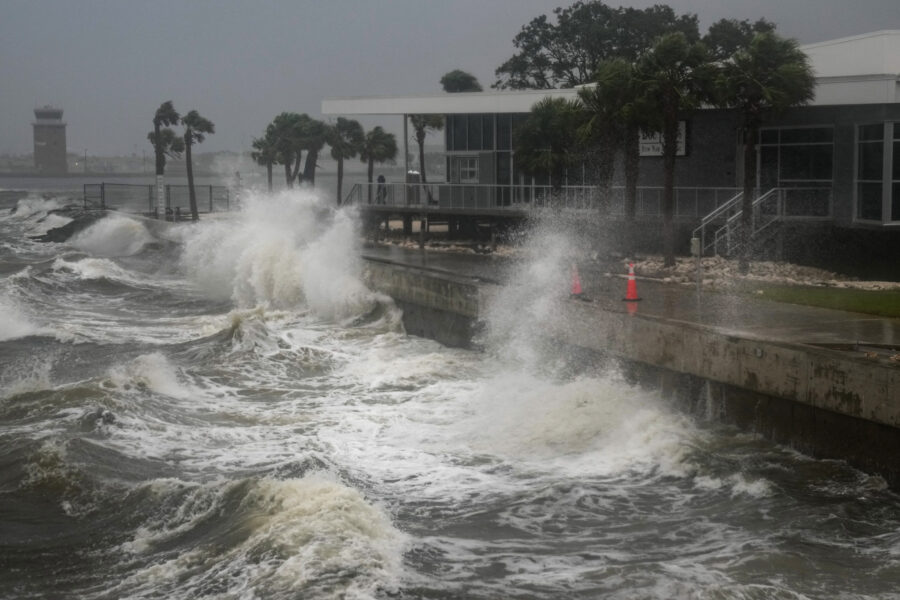New Guidelines Center the Needs of People With Disabilities During Petrochemical Disasters
During disasters, the needs of people with disabilities are often overlooked. Authors of new guidelines hope to change that and to support people with disabilities during petrochemical disasters.
Petrochemical disasters could take the form of chemical spills, fires at facilities, transportation accidents, or even events caused by climate disasters like hurricanes. Two co-authors of a new disability-centered guidance for emergency planning during petrochemical disasters say people with disabilities are most at risk when these events happen.
Jason Hallmark works remotely in Pittsburgh for The Climate Reality Project based in Washington, D.C. Hilary Flint is director of communications and community engagement for Beaver County, Marcellus Awareness Community (BCMAC). She was displaced from her Beaver County home because of the Norfolk Southern train derailment. The Allegheny Front’s Kara Holsopple recently spoke with them about “Petrochemical Disasters on Our Warming Planet: Disability Centered Guidance for Emergency Planning,” which was produced in collaboration with Partnership for Inclusive Disaster Strategies and others.
Explore the latest news about what’s at stake for the climate during this election season.
KARA HOLSOPPLE: Why did you work on this project?
JASON HALLMARK: I have multiple sclerosis. And that’s really when I started looking into the intersection of living with disability and climate and realized just how disproportionate the impacts are, but also how disproportionate the involvement of people with disabilities is in the climate movement. We’re forgotten and ignored. And it really shows up when disasters happen.
HILARY FLINT: I’m a cancer survivor, and I have a chronic illness. I think much of this project was really born from what we all learned after the train derailment. We tried to figure out what were the things that could have been addressed ahead of time in a petrochemical disaster and how we help communities in the future be prepared for these types of things. And not just prepare the general public, but very specifically the people like Jason and I who have additional health needs.
Ever since the derailment, I get tapped by so many different communities, people asking for advice, you know, what do I do after a petrochemical disaster? And so we just realized this doesn’t exist and why not create it?
HOLSOPPLE: What are some of the unique needs of people with disabilities during disasters that the rest of us may not think of?
FLINT: So for me, the main thing was just this belief that safe means safe for everyone, and that just isn’t the case. In our case, there wasn’t anyone going door to door in certain communities to evacuate people. And when we do that we aren’t making sure our most vulnerable are taken care of. There are people that might not be able to see their television and might not be able to listen to a radio station. So maybe they didn’t even know they had to evacuate. If we aren’t checking in on those people, then we’re not really doing an adequate job at disaster preparedness.
HALLMARK: Disability is not a monolith, so it can vary from person to person. There are definitely examples like having accessible transportation after a disaster. Some of the census data that came out showed the majority of people with disabilities who are forced out in an evacuation are never able to return home. It’s not just the initial need to make sure we have a wheelchair-accessible van. We need to make sure that evacuation centers, at a bare minimum, are ADA-compliant. But there are a lot of things that people really don’t think about that are further along in the process of dealing with the disaster.
That’s really one of the main reasons I stress you making sure that people with disabilities have a seat at the table. This is a community that has spent their life adapting to a world that wasn’t built for them. And when we’re looking at things like climate change or preparing for different disasters, what better knowledge and wisdom to have when you’re thinking about adapting in the future? And unfortunately, that doesn’t doesn’t really happen.
HOLSOPPLE: What are some of the ways people with disabilities can advocate for themselves before, during, and after a disaster?
HALLMARK: What I do is every opportunity I get, I talk about it no matter what room I’m in, who I’m in front of. It’s not really in the front of people’s minds, even within the movement. But I will say I look at what I do as a privilege. I’m very privileged as there are people with disabilities who couldn’t do what I’m doing, whether because of their physical disabilities or not having the resources needed to do it. So I personally want to make it easier for people with disabilities to get involved and have their voices heard.
FLINT: We address this question in the guidance. I authored a section called “Understanding and Advocating for Your Rights after a Petrochemical Disaster.” There are legal rights. Under the ADA, the Americans with Disabilities Act, you have the right to receive information in a way that you can understand so you can request things in Braille, for example. And then there are also the Clean Air Act, the Safe Water Drinking Act. In the state of Pennsylvania, we have a constitutional right to clean air and clean water. So getting ahead of it and understanding what the general rights are before you’re in a disaster can be super helpful.
HOLSOPPLE: This section of the guidelines really stood out to me: “When the crisis is passed, local authorities will issue an all-clear announcement and provide any additional information or instructions for staying safe. Keep in mind that elected officials and corporations alike are quick to declare an area safe without considering the diverse needs of its community members, including those who are disabled.” Can you say a little bit about that?
FLINT: I will say that line is very much representative of my experience and the experience that people in Beaver County and East Palestine had after the train derailment. We were told everything was good. You can go back home. Depending on what zip code you lived in that looked a little bit different. But for example, I self-evacuated. My community didn’t even have to. So of course, when they announce that all the evacuations are lifted, I think it’s okay to go home.
And I open my door and it smells like sweet bleach and my eyes start burning and my skin turns red and my feet turn purple. Clearly, it’s not safe for me to be home. But when you look at the existing guidelines and the way that the system operates right now, it was safe for the general public from whatever readings they had. Those kinds of safety parameters aren’t inclusive.
HOLSOPPLE: These guidelines also include a section for industry, not only for the safety of nearby residents but for workers. One section reads: “Petrochemical plants have standard operating procedures for emergency preparedness. It is unclear, however, whether these effectively address the damage that might be caused by a hurricane, earthquake, flood or fire.” Can you unpack that a little bit?
HALLMARK: These facilities aren’t really prepared for the types of storms that we’re seeing and, of course, that we’re going to continue to see. And we were thinking a lot, too, about places like Louisiana and Texas because of the petrochemical facilities, all the chemical facilities they have there, and how scary that would be.
FLINT: When I think about the guidelines and how we wrote a section for industry, I kind of think of it as another way to remind them that we exist. I don’t think the industry often thinks about disabled people and how their work affects disabled people. They might have employees who then become disabled after a workplace incident.
So this was important to us as a reminder that we are here, we exist, and we want you to consider our needs. Also, I just think it’s really important when we look at any of our organizing work to include the perspective of the worker and of the people doing that labor there because they are people too. They aren’t necessarily industry, right? They are the working class.
HOLSOPPLE: How would you like this guide to be used?
FLINT: I would like to see these guidelines presented to different municipal governments. I would love it if other people who have petrochemical facilities in their region took this guideline and just put it in front of their municipal government, whether that’s county commissioners or town mayors.
I also would love for environmental groups to try to get in front of the industry, try to get a meeting with Shell, Exxon, or Norfolk Southern, and show them this. I would love to go to D.C. and Harrisburg and get this in front of some of our state or federal government officials who can make a difference. So, I would like anyone who feels empowered and thinks this work is important. I would like to see them use it, however, it makes sense to them.
HALLMARK: I second everything Hilary, said getting in front of people’s eyes, decision-makers. But also making sure that we can get it out to those front-line communities ahead of time as well, so different organizations who do things like mutual aid work and people who are going to be first on the scene can really help with individual preparedness.
About This Story
Perhaps you noticed: This story, like all the news we publish, is free to read. That’s because Inside Climate News is a 501c3 nonprofit organization. We do not charge a subscription fee, lock our news behind a paywall, or clutter our website with ads. We make our news on climate and the environment freely available to you and anyone who wants it.
That’s not all. We also share our news for free with scores of other media organizations around the country. Many of them can’t afford to do environmental journalism of their own. We’ve built bureaus from coast to coast to report local stories, collaborate with local newsrooms and co-publish articles so that this vital work is shared as widely as possible.
Two of us launched ICN in 2007. Six years later we earned a Pulitzer Prize for National Reporting, and now we run the oldest and largest dedicated climate newsroom in the nation. We tell the story in all its complexity. We hold polluters accountable. We expose environmental injustice. We debunk misinformation. We scrutinize solutions and inspire action.
Donations from readers like you fund every aspect of what we do. If you don’t already, will you support our ongoing work, our reporting on the biggest crisis facing our planet, and help us reach even more readers in more places?
Please take a moment to make a tax-deductible donation. Every one of them makes a difference.
Thank you,
David Sassoon
Founder and Publisher
Vernon Loeb
Executive Editor
Share this article
- Republish
Disclaimer: The copyright of this article belongs to the original author. Reposting this article is solely for the purpose of information dissemination and does not constitute any investment advice. If there is any infringement, please contact us immediately. We will make corrections or deletions as necessary. Thank you.








